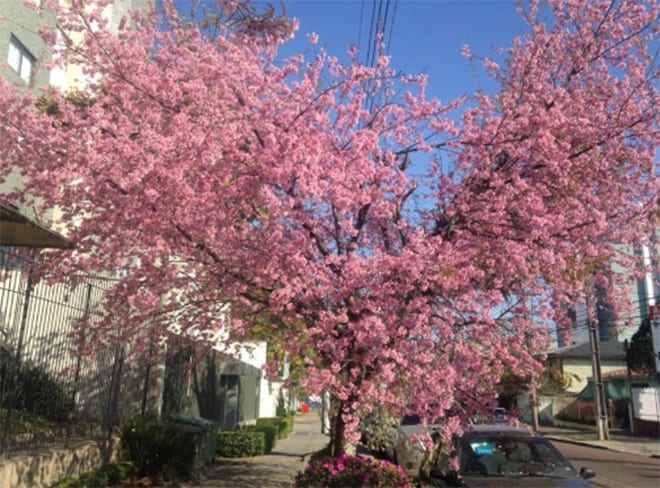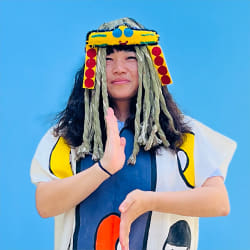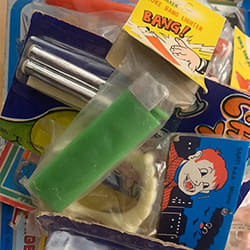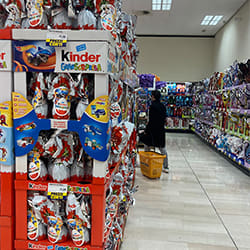Definitely one of the most attractive things about Curitiba is that it has a lot of greenery.
In the south of Brazil there is a type of pine tree called the “Brazilian pine,” but it is known as the “Paraná pine” because there are so many of them in Paraná state. Looking at a mature tree you see how the branches spread horizontally from the trunk like the ribs of an umbrella and the leaves are at the ends of the branches, so you can recognize it straight away, even from a distance. A seed from a pinecone is called a “pinhão ,” which you can eat after parboiling or scalding, or you can use in sweets or savory dishes.

Curitiba has as many as 28 parks and 15 forests. The first park in Curitiba was created in 1886. It was called the Passeio Público, which means “public promenade.”
Nowadays, the most popular park in Curitiba is Barigui Park. Before the park was created it was wetlands that used to be flooded by the Barigui river. Curitiba City bought the land, built an artificial lake of about 40 hectares, and turned it into a park. Today lots of people enjoy the park for jogging, cycling, walking, and so on. You can sometimes see wild capybaras close up.
The Jardim Botânico (Botanical Gardens) is the sightseeing spot to get your postcard photo of Curitiba. Its steel and glass conservatory is an imposing sight and there is a superb formal French garden near the entrance. It’s very impressive.

At Parque Tanguá (Tanguá Park), it’s a good idea to spend some time at the fountains, and to take a look at the views from the observation decks. It’s a park with a quiet feel. It’s popular with the locals for the beautiful sunsets.

Parque Tingui (Tingui Park) is a long and narrow park. The pathways are so completely surrounded by greenery that you forget you’re in the middle of the city. There is a Ukrainian memorial in this park, and you can find out about the history of immigration to Curitiba.

The Museu Oscar Niemeyer (Oscar Niemeyer Museum) was designed by the famous architect Oscar Niemeyer. The building design is in the shape of an eye, so it’s popularly known as the “Eye Museum.”

Santa Felicidade is an Italian immigrant neighborhood 10 km northwest of Curitiba city center. Here you can enjoy Italian food and wineries. You can taste local wines, and buy chocolate, salami, cheese, as well as wine, at a place called Durigan Wines.

Another of the pleasures of Curitiba is its cafés. Curitiba has 1 of only 4 Hard Rock Cafes in Brazil.
Lucca is a café I went to on my last visit to Curitiba and sells coffees from all over Brazil. At the weekend there were a lot of people having brunch, taking their time as they enjoyed their coffee and so on. The sandwiches were good, and the pies and other pastries were the best.

Every café we went into had a feeling as though “things had slowed down.” The waitstaff were a little slower in coming to take our order, and it seemed to take longer for the things we ordered to be brought out. But nobody was complaining. It felt as though everyone was just enjoying the opportunity to take it easy for a bit. I have done a little thinking about this and wonder whether, without realizing it, I have forgotten to take things slower in São Paulo.

There is the Panoramic Tower (109 m) in Curitiba, which gives views across the city. It might be more enjoyable to go up the tower after you’ve first visited a few of the sightseeing spots.

About 25 years ago, some young cherry trees were sent to Curitiba from Japan. They were planted by roadways, not just in parks, so the streets are really beautiful when they’re in full bloom.
Do you see what’s so attractive about Curitiba now? I am raring to go on another visit there!





























































